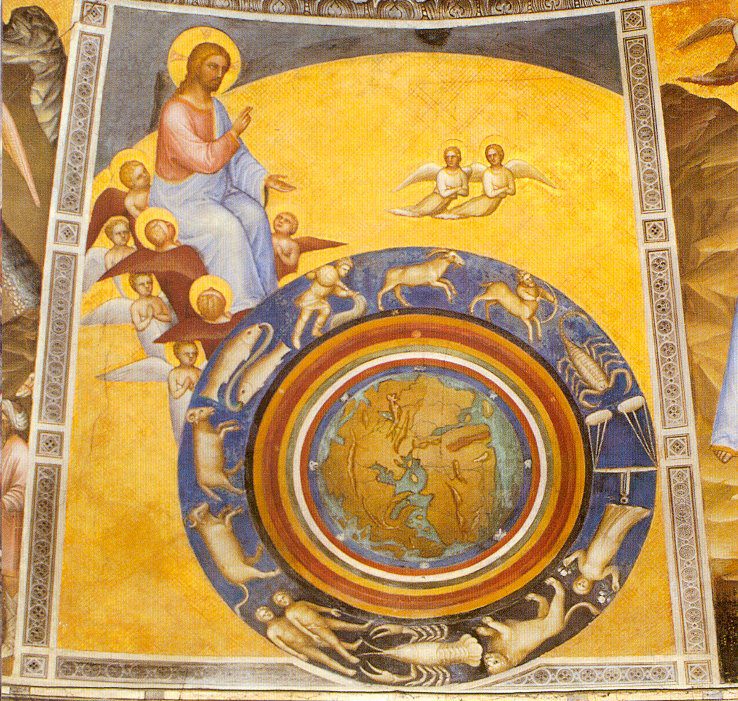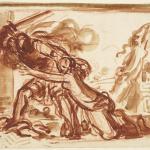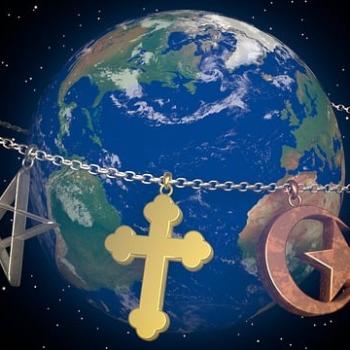I stumbled across an interesting account of a long-running debate between the Reformed neo-orthodox theologian Karl Barth and the Catholic theologian Erich Przywara on the issue of “the analogy of being.” It contains this wonderful line: “In the charmed phrase of German theologian Christian Link, God cannot be found in the world any more than Charles Dickens can be found in his novels, yet he is there throughout and is the reason they exist.”
“The Analogy of Being” is the notion that God’s existence is fundamental, whereas our existence is like His, but only by analogy. His being is the ultimate reality. Our reality and that of creation is not fully real in the sense that His is. But what is real in us is like His reality. So we partake of God in our very existence, though He is radically different than we are.
Contrary to this view is the “univocity” of being, the notion that God exists in the same way that we exist. This derived from the scholastic theologian Duns Scotus and is said to have become dominant with the Protestant Reformation. Some Catholics and theologians of the radical orthodox variety say that losing the medieval concept of the analogy of being–which is to be found in Augustine and Aquinas–started the downhill slide to materialism and atheism. God is just another object in the universe, but we can’t perceive Him, so He must not exist. Again, Catholic apologists blame this on the Reformation, which they portray as the beginning of modernism.
I have been trying to figure out where Luther comes down in this debate. My sense is that the issue, as it is usually framed, is a debate between Catholics and Calvinists and that Luther would have problems with both of them. And I believe the Lutheran position is coming into focus in my mind, thank to the work of Mark Mattes, as I shall explain.
First, read about the debate between Barth and Przywara in the Catholic periodical Commonweal Magazine. From Marcia Pally, ‘The Invention of the Antichrist’:
It was Przywara’s work on human nature that provoked Barth’s initial criticism. Przywara set out his ideas in his 1926-7 Polarity and more fully in his 1931 Analogy of Being. But it was not Przywara who first came up with the idea that human nature partakes analogously of God’s “being.” That idea began with Thomas Aquinas. Its premise was that God is the ground and reason for everything. There could have been nothing at all, but instead there’s something; and the reason that there’s something is God. One might say God is what makes existence itself possible, from the existence of time to the existence of peaches. So something of God, the source of existence, can be found in everything and everyone that exists. God, Aquinas wrote, is “intimate” within us. In the charmed phrase of German theologian Christian Link, God cannot be found in the world any more than Charles Dickens can be found in his novels, yet he is there throughout and is the reason they exist.But of course God is also radically different from humanity. We are material beings; he is immaterial. We live in time; he is outside time. Nevertheless, there is a kind of kinship between us. As Scripture puts it, we are made in his “image.” Or as Przywara puts it, following Aquinas, we are “analogous” to the divine “being.” Drawing on both Aquinas and Augustine, Przywara held that God is both “in us” and “beyond us.”. . .
Barth’s issue was fallenness. He thought Aquinas’s “analogy of being” was a dangerous idea because it placed fallen humanity too close to God. Przywara, Barth said, aggrandized humankind, allowing us to imagine ourselves as “like” God, and therefore capable of acting rightly on our own. Any look at modern European history should dispel that illusion. In Barth’s view, the analogy of being downplayed God’s otherness. The only real bridge between humanity and the wholly other God is Jesus, fully human and fully divine. But the analogy of being suggests that human nature itself offers us another bridge to God. It suggests that, because we are in God’s image, we can understand God’s nature just by using our natural capacities.
Luther would no doubt consider both Barth’s Calvinism and Przywara’s Catholicism as presuming to comprehend the mystery of God apart from Christ. But if you bring Christ into the discussion, we can say that God the Father Almighty is, indeed, wholly other than we are. And yet God the Son is a being exactly like we are.Mark Mattes, in his brilliant book Martin Luther’s Theology of Beauty, goes deeply into this issue. Luther does say that all reality partakes of God, not as a hierarchical Platonic ladder of being that we must ascend, but as God’s mask, in which He is hidden in coming down to us. Luther, says Matthes, goes beyond both the analogy of being, in affirming God’s connection to the world, and the univocity of being, in stressing the implications of God’s material incarnation.
As he contrasts Luther with both the radical Orthodox theology and the Catholic nouvelle theologie, Mattes summarizes where Luther stands and what he contributes:
For Luther, God’s utter transcendence (beyond either univocity or analogy) and his incarnation in Christ (deeper than analogy), as well as the human propensity tjo self-idolize through speculation, undermine both the (realist’s) analogy and (nominalist’s) univocity of being. Instead, for Luther God’s being is self-subsisting and infinite, overflowing goodness that sustains all creatures” (p. 72).
For my three-part review of Mark Mattes’ book, which goes much deeper into these and related issues, see my posts Luther’s Theology of Beauty, Luther on Matter, Senses, & the Emotions, and Luther on Music, Art, & Aesthetic Pleasure.
Illustration by Giusto de’ Menabuoi (1330-1390) [Public domain] via Wikimedia Commons














